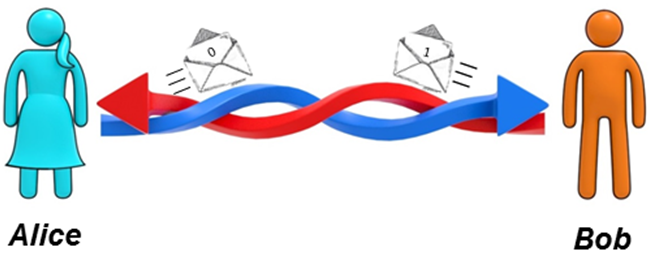Kill two bits with one photon
A single quantum particle, a photon, allows for the simultaneous transmission of two bits between two distant parties
In a world increasingly dependent on technology: speed, throughput and privacy are crucial parameters to improve and optimise in communication. Quantum physics and its counterintuitive phenomena can greatly help for this task.
In this context, it has been recently proposed that a single particle in quantum superposition of two physical locations allows two distant parties to simultaneously exchange two bits of information, thus performing “two-way” communication. This task is impossible in a classical scenario, where the parties would need to use two different particles, one per bit, or send the same particle back and forth. Therefore, the exploit of quantum superposition leads to advantages in time or resources employed for communication.
Researchers at the University of Vienna have now experimentally demonstrated this phenomenon with single photons, the particles that compose light. Furthermore, based on this two-way signalling they have developed and implemented a communication protocol in which each party can send bits to the other one such that neither the value of the bits nor the direction of communication are revealed to an eavesdropper. In this sense the protocol is secure and anonymous.
These insights show the multiple advantages offered by quantum superposition for communication purposes and set a base for the development of new schemes that can outperform the classical ones.

© 2019 WILEY‐VCH Verlag GmbH & Co. KGaA, Weinheim
These results are published in Advanced Quantum Technologies, Volume2, Issue 11, November 2019, 1900050. https://doi.org/10.1002/qute.201900050